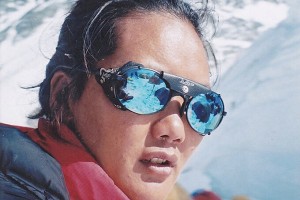
Peter Trewin writes about Liverpool's place in climbing lore, and what it has to offer today.
Liverpool and its environs aren't just about the Beatles, Wayne Rooney, Daniel Craig, and Half Man Half Biscuit. It has also spawned, and been host to, a few notable climbers. Let's have a look at who they were, where they climbed, and how Liverpool ties them all together.
Kirkus, Edwards, Hargreaves, Tilman, Rouse
Let's start at the beginning. The city of Liverpool and its university were an early focus for rock climbing and mountaineering, not only in Britain but indeed the world. Helsby was included in one of the earliest guidebooks, 'Some Gritstone Climbs' (1913), by John Laycock of the Manchester based Rucksack Club. Laycock met stern opposition within the club regarding the private ownership of many of the crags. He resigned in disgust and published his guide privately. This was almost two decades before the Kinder mass trespass (1932) which did much to open up Britain's hills to the public. Laycock moved to Singapore as a prominent lawyer. His efforts to set up the city's first multi-racial club in the face of British expat opposition read like a chapter from Orwells' 'Burmese Days'.
Activity in Liverpool revolved around the Wayfarers' Club and Liverpool University Mountaineering Club. The Wayfarers was set up in 1906, with outdoor meets being held from 1923 onwards. The club paid an annual fee to use Irby Quarry for climbing practice, and as club members became proficient, they moved on to Helsby and then North Wales. Colin Kirkus, Menlove Edwards, Bill Tilman, and A.B. Hargreaves were all members of the Wayfarers. Al Rouse, the first Briton to summit K2, was a member of the Wirral-based Gwydyr Club, and learned to climb at Irby, Helsby, and The Breck.
Mallory and Irvine, Irby and Everest
In the early years of the 20th century, Liverpool was the UK's premier port. Various Himalayan expeditions set sail during the 1920s and 30s. A film of the first Everest expedition in 1922, which included George Mallory, was shown in Liverpool's Philharmonic Hall. The Wayfarers' Club held a dinner for Mallory and Irvine before they set off on the 1924 Everest expedition. Both Mallory and Irvine were locals. Mallory was born in Mobberley, Cheshire, and went to West Kirby Prep School. Irvine was born in Birkenhead, and went to Birkenhead School.
The expedition assembled in Darjeeling at the end of March 1924. Mallory and Irvine made their ill-fated summit attempt on the 8th and 9th of June. The question of whether the pair made the top and the macabre recent discovery of Mallory's body have excited great public and media interest. Indeed the makers of a proposed Hollywood film have considered Tom Hardy, Benedict Cumberbatch and Ewan McGregor for the Mallory role. This is plain daft: Tom Cruise is the obvious choice. I know Mallory was six feet tall and Tom's only five feet eight, but Jack Reacher was supposed to be six foot five and Tom cruised that role.
It's reported that Mallory and Irvine tested climbing equipment at Irby before setting off for Everest. Local legend has it that Mallory hurt his ankle at Irby while training; presumably it healed quickly. Colin Kirkus, a Liverpool based climber who was pioneering cutting-edge routes, expected to be on the 1933 expedition. It's said that he was deeply hurt not to be included. In Jim Perrin's biography of Menlove Edwards, it's suggested that the prime reason was the snobbery of that era: Kirkus was a northern office worker and emphatically not part of the Cambridge set.
Intriguing moves... and movers
Liverpool has continued to be a focus for rock climbing and mountaineering, with Irby a well-used venue for beginners, groups, and school parties to learn climbing skills. The recently restored low level traverse is a traditional training exercise for the more experienced. Helsby's popularity has waxed and waned over the years; currently it's back in vogue again. After World War II, The Breck, Frodsham, and Frogsmouth Quarry also became popular.
Pex Hill Quarry, a disused sandstone quarry on the outskirts of Liverpool, was another popular crag, renowned for its fingery technicality and boldness. Though boldness is a fine attribute, occasionally it can go wrong. For local climber Gary Smith, it went catastrophically wrong, when a solo attempt at The (well named) Abort failed near the top.
The ensuing fall broke many bones in his body. As Gary writhed, screaming on the floor, two elderly gents ran over, made him as comfortable as possible and called for an ambulance. Then one of them phoned Gary's wife. 'Aye, it's Doug Scott here. Your Gary's 'ad a nasty accident, an' he's been taken to hospital'. Gary's wife was well impressed. 'What - the Doug Scott? The first British climber up Everest!?'
Doug helped Gary get over the emotional damage that accompanied his injuries. During the recovery period, Gary compared his screaming abdabs lying on the deck at Pex to Doug's cool composure on The Ogre. 'Aye,' Doug recalled, on the phone, 'I did think I might not have got off The Ogre. Funny how differently you react when there's no one around to hear you scream'.
In addition to the previously mentioned, well-known figures who have regularly climbed on the area's crags include: Mike Adams, Hugh Banner, Martin Boysen, Pete Crew, Johnny Cunningham, Phil Davidson, Nick Dixon, Ron Fawcett, John Hart, Joe Healy, Pete Minks, Tony Mitchell, Mike Owen, Jim Perrin, Andy Pollitt, Andy Popp, John Redhead, Mick Ward, and Pete Whillance. Many of these climbers either attended or lectured at I.M. Marsh College, now part of Liverpool Hope University.
And although this potted history would suggest a majority male climbing scene around Liverpool, two big names in British and world climbing grew up or spent part of their childhood in the north-west: Shauna Coxsey (Runcorn) and Hazel Findlay (Warrington). The boom in local indoor facilities and university student numbers will only increase the talent developing in the area, with skills perhaps transferring to the sandstone.
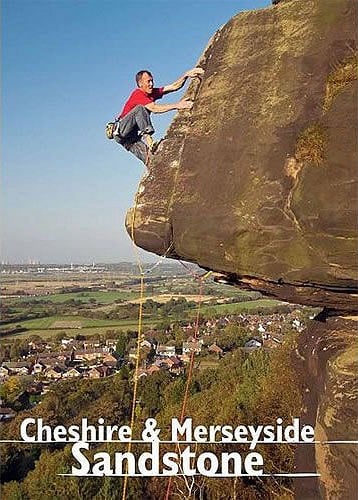
The BMC recently supported the production of a guidebook which has rekindled interest. A thriving Facebook group records new routes, coordinates crag clean-ups, and shares general banter and photos from the good old days.
Climbers as talented and disparate as the American Hot Henry Barber, German Stefan Glowacz and our very own Johnny Dawes have also visited the area over the years and been impressed. It's claimed that some of the more recent routes compare favourably with the hardest in the country. Certainly the sandstone lends itself to intriguingly technical moves. Who knows what the next generation will bring to the Merseyside outcrops.
Many thanks to Mick Ward for his help with this article



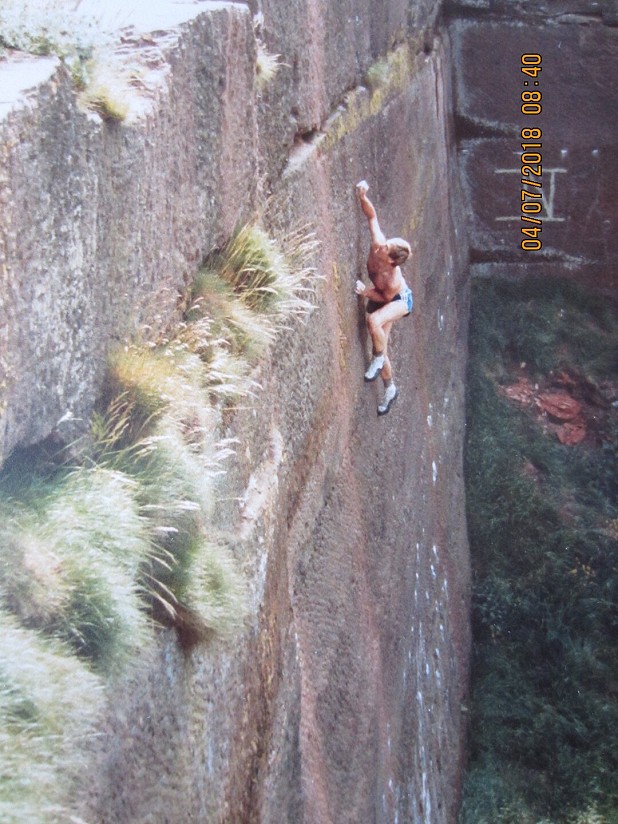
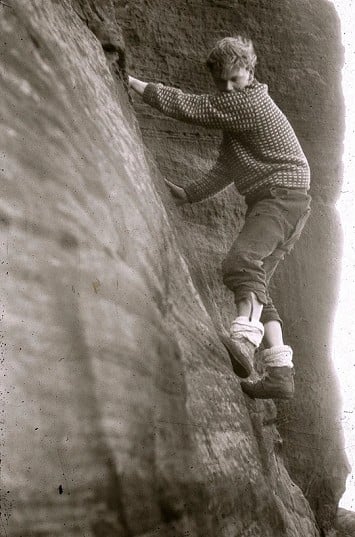


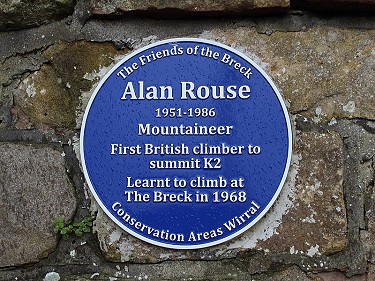

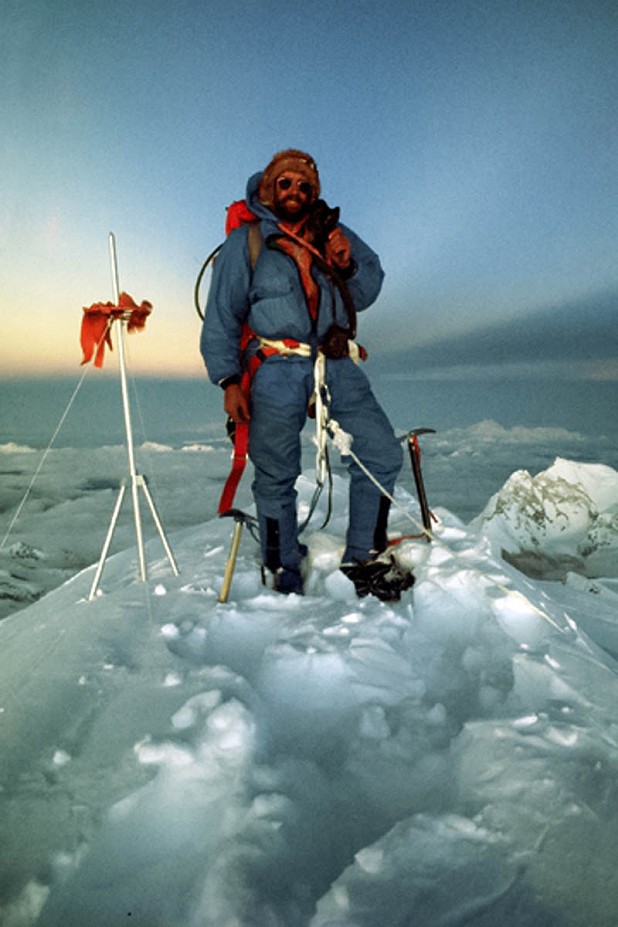

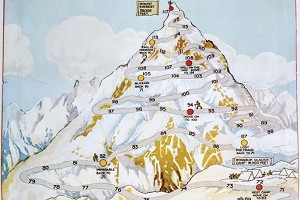
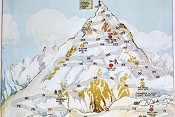

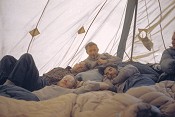








Comments
When I was a kid in Liverpool I used to wonder about all these big red sandstone outcrops you'd see in lots of places. Most of them are railway cuttings but there are some down near the 'Pier 'Ed' that may have been quarries? There are also lots of tunnels cut into the sandstone.
Nice read Peter!
I believe Liverpool University Mountaineering Club is also one of - if not the oldest university climbing clubs in the country - established around 1930 if I remember correctly. Lots of history!
Oxford University club was something like 1910 & I'm not sure that's the oldest in the UK & I think some Swiss universities go back into the 19th century
Nice read Pete. I don't know if it's just some kind of confirmation bias but a Merseyside apprenticeship seems to have paid massive dividends for a certain generation. And decent longevity. I think Brian Hall's recent Jamcrack Podcast claims Britain's first/early English 6b from Al Rouse at The Breck. Phil Davidson on E7s before his untimely death. Mike Owen hoovering up hard repeats around the country and still cranking 8a. Harold Walmsley new routing sport/E3 in his 70s. Lots of others. I happened upon the Dawes in Harmers Wood a couple of years ago, Andy Popp showing a long standing project. True to form he sold me a book :)
An interesting read for sure...I grew up in Paige Moss and started climbing at Pex and various cuttings about 1980 I moved away in 1983 as did my climbing mates so never was part of the scene at the time. It's worth mentioning.... although not strictly Liverpool, but quite a few of us enjoyed our first winter trips with St.Helens mountaineering club who welcomed us and showed us a great time....I can't recall names but there were some very good and classically tough winter climbers in the club.....I hope it's still going.